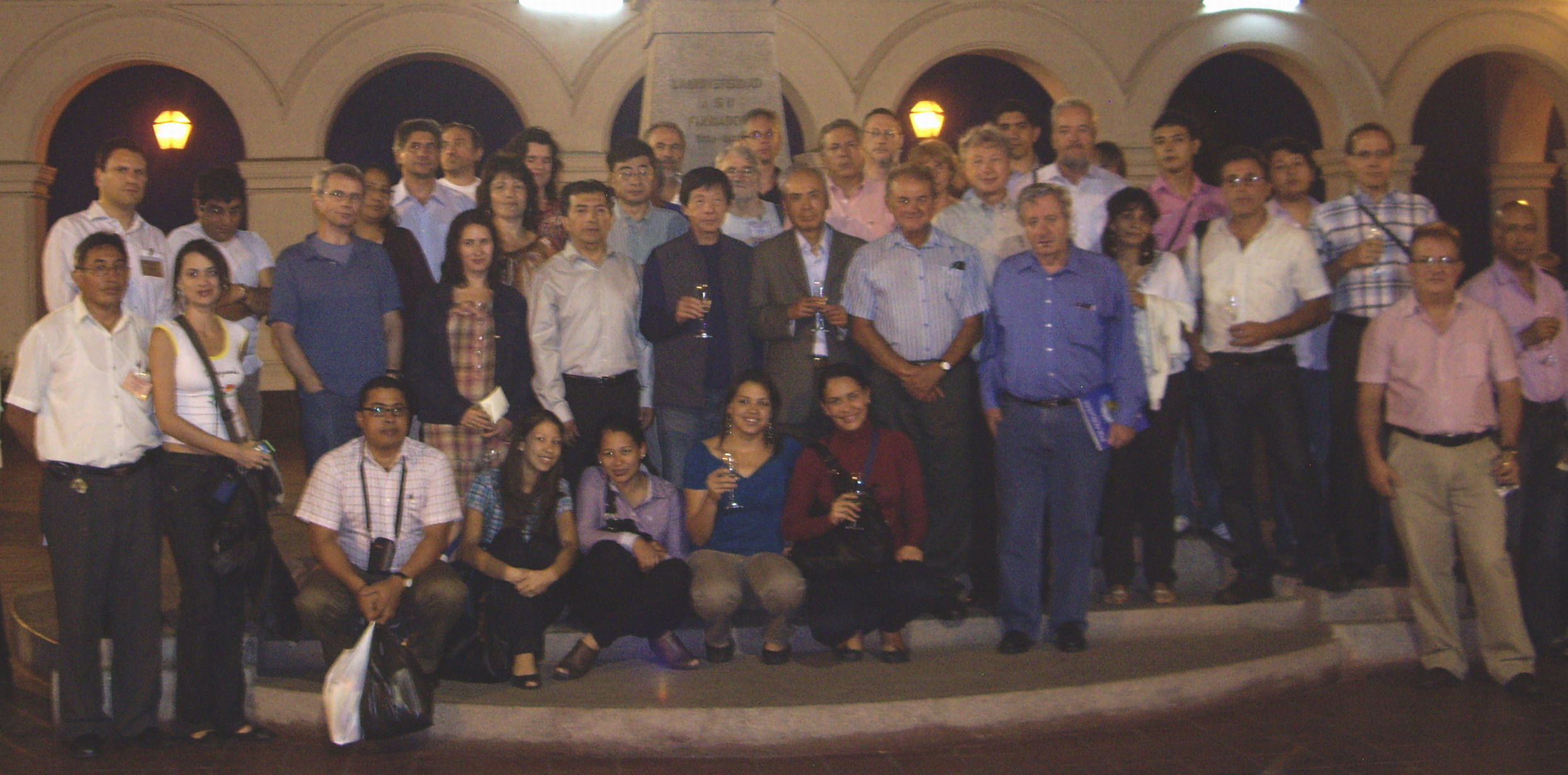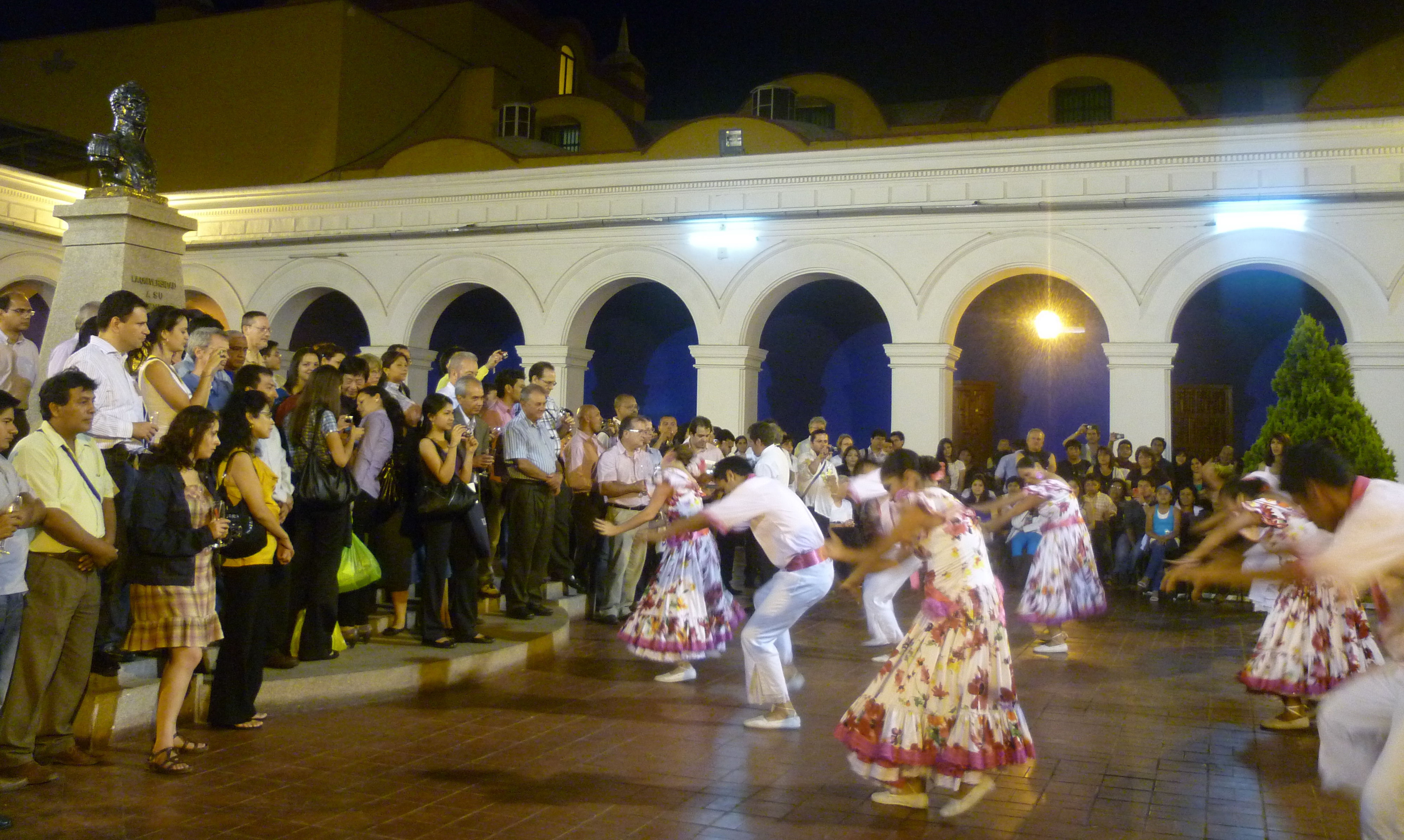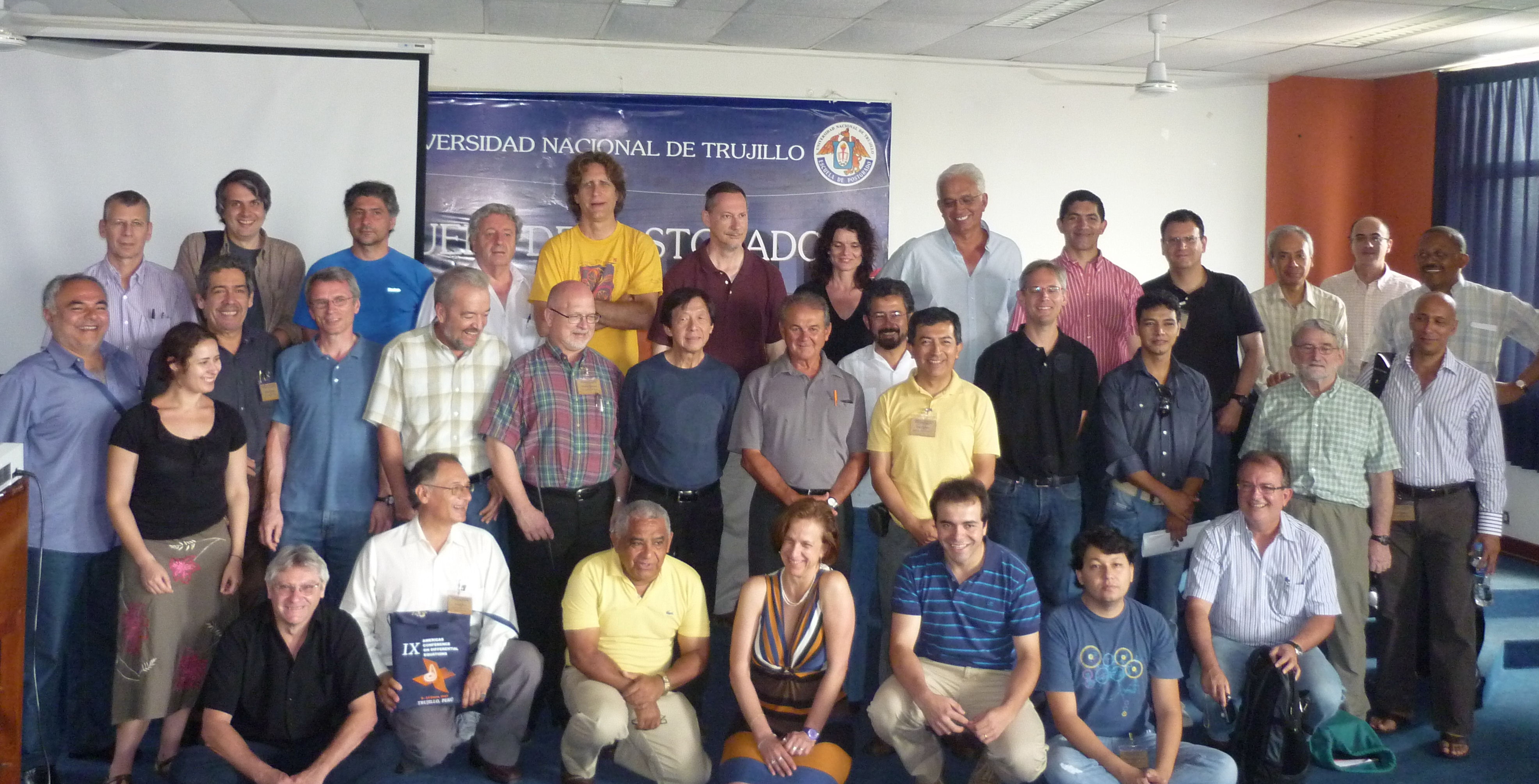
 Trujillo's main square and Huanchaco Beach.
Trujillo's main square and Huanchaco Beach.
The Americas Conference on Differential Equations is a biennial
meeting which started in 1994, and it gathers leading experts in the areas of
differential equations, dynamical systems and nonlinear analysis from the
American continent, as well as special guests from Europe, to exchange ideas and
results on cutting-edge research in these very active areas of science. The
conference also helps initiating and enhancing ongoing research collaborations,
opportunities for new collaborations, and opportunities for graduate studies and
postdoctoral positions. Previous editions of this conference have been held in
Mexico, Brazil, USA, Venezuela, Canada, Chile, and Colombia. The X Americas
Conference is scheduled for August 2014 in Buenos Aires, Argentina. The impact
of this Americas Conference is very broad, especially because new generations of
young students and faculty are being recruited from all corners of the continent
to join the very solid group of mathematicians formed by the top researchers who
started this international event.
The IX Americas Conference on Differential Equations hosted at the
Universidad Nacional de Trujillo, offered four
mini-courses, and several outstanding plenary, invited and contributed talks, as
well as several social activities. We had hundreds of participants from USA,
Canada, Spain, France, and from several countries in Latin America; in
particular, we had several faculty and students coming from Argentina, Brazil,
Chile, Colombia, Mexico, Venezuela, as well as participants from 15 Peruvian
universities from across the country. Everyone enjoyed Trujillo for the very warm
hospitality of its people, great weather, beautiful beaches, and the spectacular
Peruvian food.

 Left: the opening day of the conference. Right: traditional Peruvian dance.
Left: the opening day of the conference. Right: traditional Peruvian dance.
The following mini-courses were organised:
Ekeland’s Variational Principle and Analysis in Frechet Spaces
Ivar Ekeland, University of British Columbia
Among other things, local surjection theorems and implicit function theorems
in Banach spaces and Frechet spaces were presented. In contrast to the classical
Nash-Moser approach, Ekeland did not use the Newton procedure, but his own
Ekeland's variational principle. As a result, the function to be inverted is not
required to be C2, or even C1,
or even Frechet-differentiable.
Nonnegative Solutions of Elliptic and Parabolic Equations:
Symmetry, the Nodal Structure, and Large-Time Behavior
Peter Polacik, University of Minnesota
Nonlinear elliptic and parabolic equations on symmetric domains were
discussed. First, symmetry properties of nonnegative solutions were discussed.
For solutions which are not strictly positive, the talk also focused on the
structure of their nodal sets. It was also shown how the symmetry is used in
some results on the asymptotic behavior of nonnegative solutions of parabolic
equations.
Structural Stability and Bifurcations in
the Differential Equations of Classical Geometry
Ronaldo Garcia & Jorge Sotomayor, Universidade F. de Goias,
& Universidade Sao Paulo
The topics discussed include: Generalities about ODEs, differential
geometry, and historical perspectives; Lines of principal curvature on surfaces
immersed in Euclidean 3-D space; Lines of axial curvature on surfaces immersed
in Euclidean 4-D space; Hypersurfaces immersed in Euclidean 4-D space, and
several open problems.
Partial Differential Equations: Control
and Numerics
Enrique Zuazua, Basque Center for Applied Mathematics
Topics discussed included modeling, analysis, numerical simulation and
control of PDEs arising in various contexts of science and technology. In a
problem of controllability, it was analyzed whether by means of a suitable (and
feasible!) controller the solution can be driven to a desired final
configuration. Clasically, the dual notion of controllability is the so called
observability problem. This problem is relevant for control purposes but also in
other contexts like inverse problems and identification issues. There are
different degrees of observability and this was particularly important in the
genuinely infinite-dimensional problems considered. A review of some of
the most relevant applications to science, engineering and technology in which
these problems arise was given. Then followed a discussion of the basic theory
for the wave and heat equation to later address some important coupled models,
as the system of thermoelasticity. These problems were also analyzed for
networks of flexible strings and beams and, in particular, how the geometry of
the network and the mutual lengths of the various strings/beams entering on it
may influence the properties of the system in what concerns control and
observation. The problem of the numerical approximation of control problems
was also discussed. It was pointed out that when controlling a
finite-dimensional approximation of the continuous model, one does not actually
compute an approximation of the control one is looking for. The possible
remedies to these pathologies are: space discretization, numerical damping,
filtering of high frequencies, multi-grid algorithms, etc. The latter fact is
of great impact form a modeling point view. Indeed, numerical approximation
schemes may also be used as discrete models. The analysis showed that these two
modeling approaches yield different results from a control theoretical point of
view and this should be taken into account. Finally, the switching strategy,
which provides a natural and efficient wat of adapting classical splitting
strategies for the control of multiphysics systems was introduced. A list of
open problems and directions of possible future research was also given.

Some of the speakers at the conference.
The slides of the following plenary presentations can be found on the
conference website:
1. Peter Bates, Michigan State University
Persistence of Normally Hyperbolic Invariant Manifolds
Under Stochastic Perturbation.
2. Alexandre Carvalho, Universidade
Sao Paulo
Nonautomous Dynamics of PDEs: Gradient Evolution Processes
3. Shui-Nee Chow, Georgia Tech
Fokker-Planck Equations on a Graph with Finite Vertices.
4. Charles Doering, Universtiy of Michigan
Ultimate State of 2-D Rayleigh-Benard Convection Between
Free-Slip Fixed Temperature Boundaries.
5. Duvan Henao, Pontificia Universidad Catolica de
Chile
Variational Models for Cavitation in Solids.
6. John Mallet-Paret, Brown University
Dynamics of Functional Differential Equations.
7. Konstantin Mischaikow, Rutgers University
Rigorous Computation of Dynamics in Infinite Dimensions.
8. Panayotis Panayotaros, I.I.M.A.S., Universidad
Nacional Autonoma de Mexico.
Nonlinear Waves in Lattices.
9. Nicolas Saintier, Universidad de Buenos Aires
Geometric Elliptic Problems.
10. Carlos Tomei, Pontificia Universidad Catolica do
Rio de Janeiro
Numerical Aspects of Nonlinear Elliptic Equations with
Finite Spectral Interaction.
11. Yingfei Yi, Georgia Tech
Noise Perturbation in Finite Dimension.
There were also invited talks by Antonio Capella, Jorge Cossio, Isabel Flores, Luz de Teresa, Hugo Leiva, Jorge Rebaza, Raul Manasevich, Nelson Merentes, Ernesto Perez Chavela, Ramon Plaza, Gustavo Ponce, Hildebrando Rodriguez-Munoz, Carlos Alberto Raposo de Cunha, Noemi Wolanski, Maria Schonbek, Ronaldo Alves-Garcia, Julio C. Ruiz Claeyssen, Jose Raul Quintero, Pedro Isaza, Jose Arzola, Fabian Flores Bazan, Marian Gidea and Roxana Lopez Cruz.